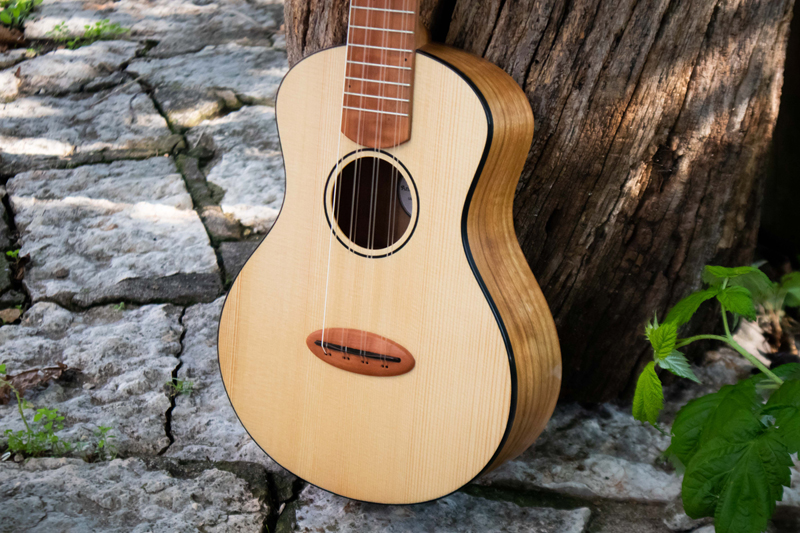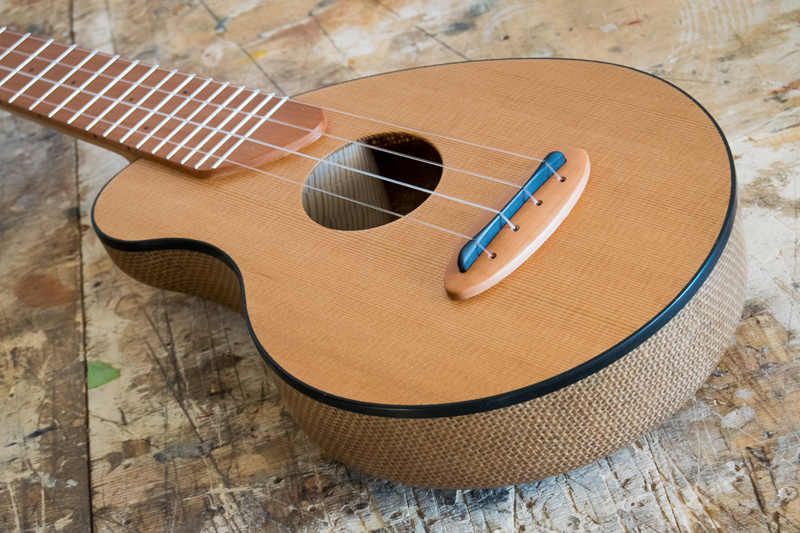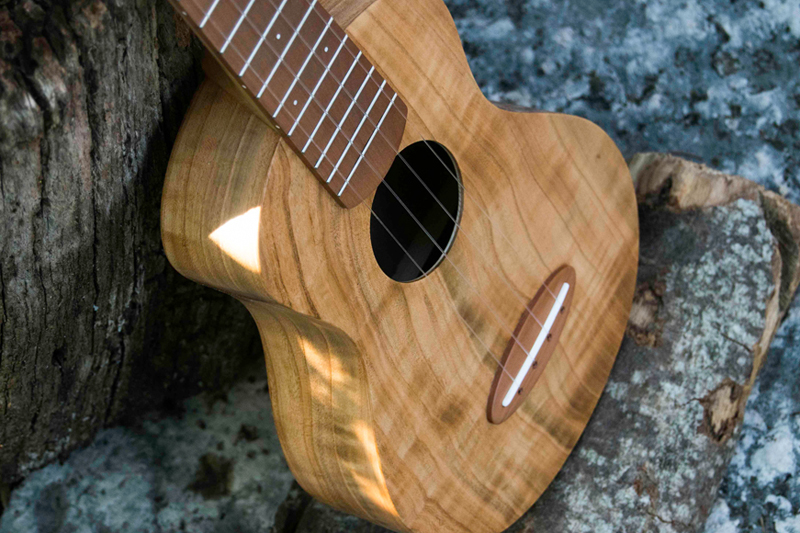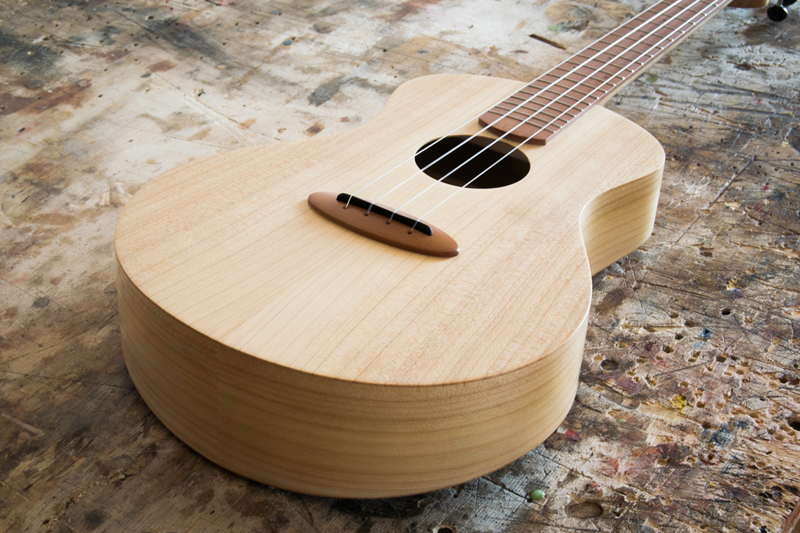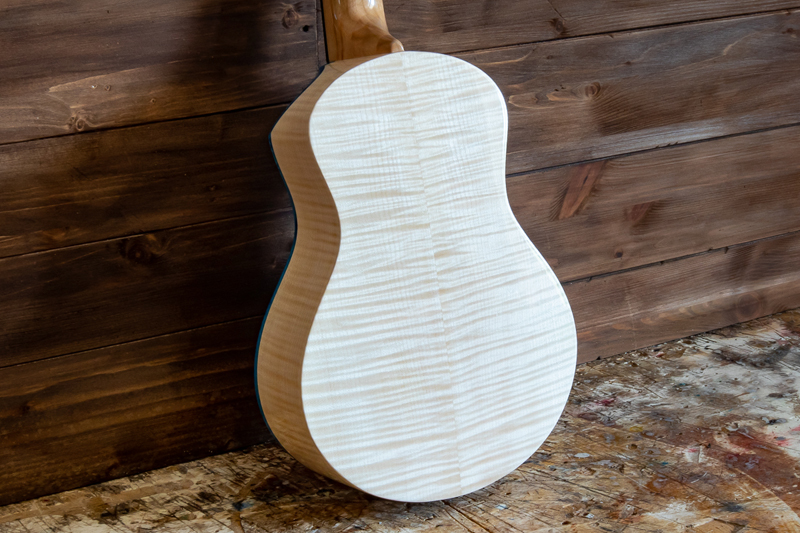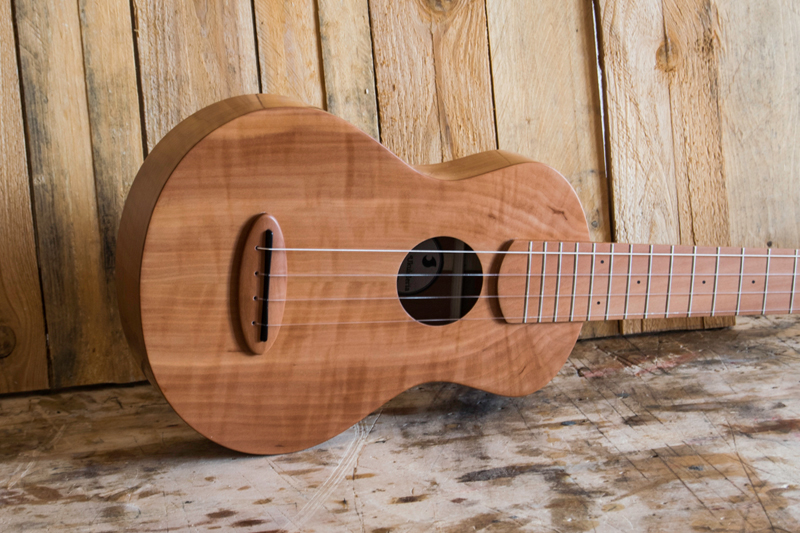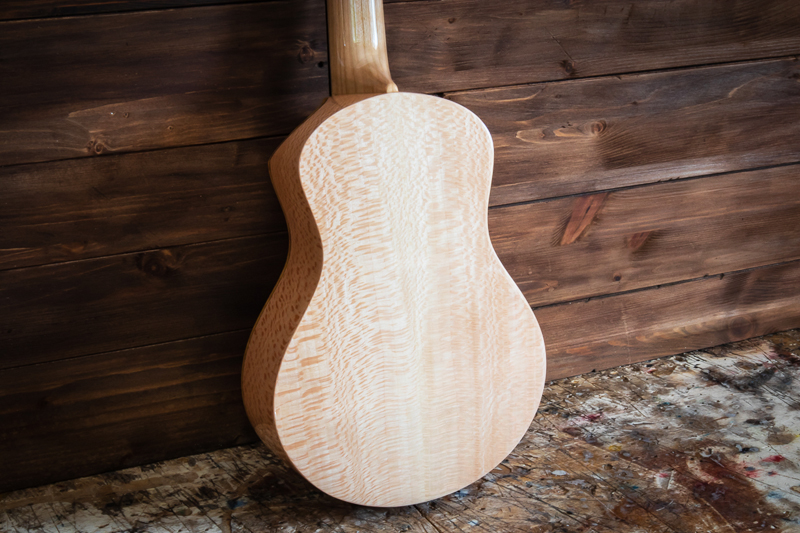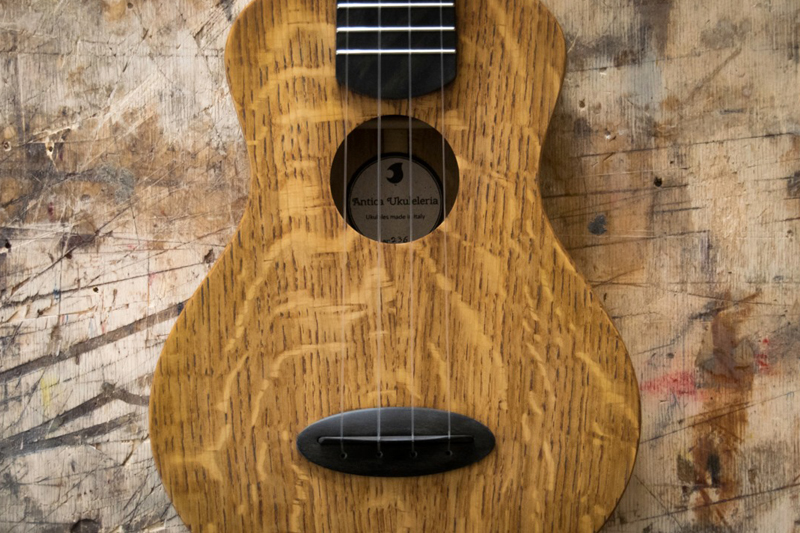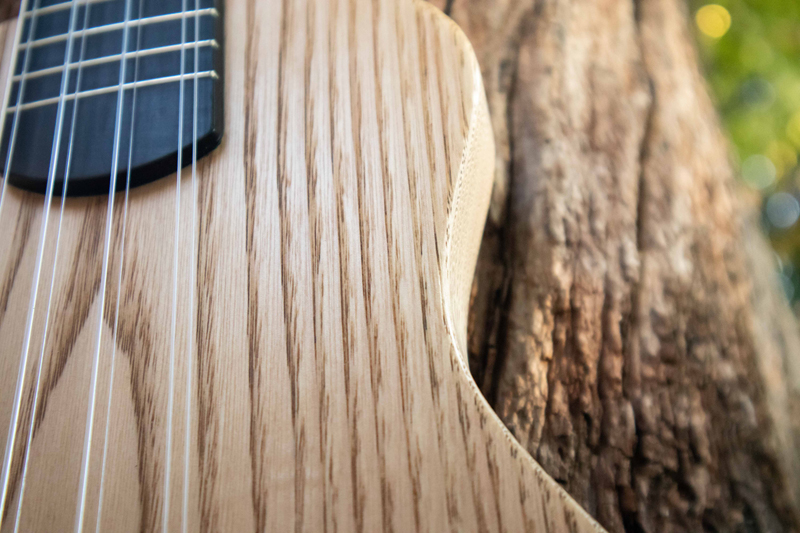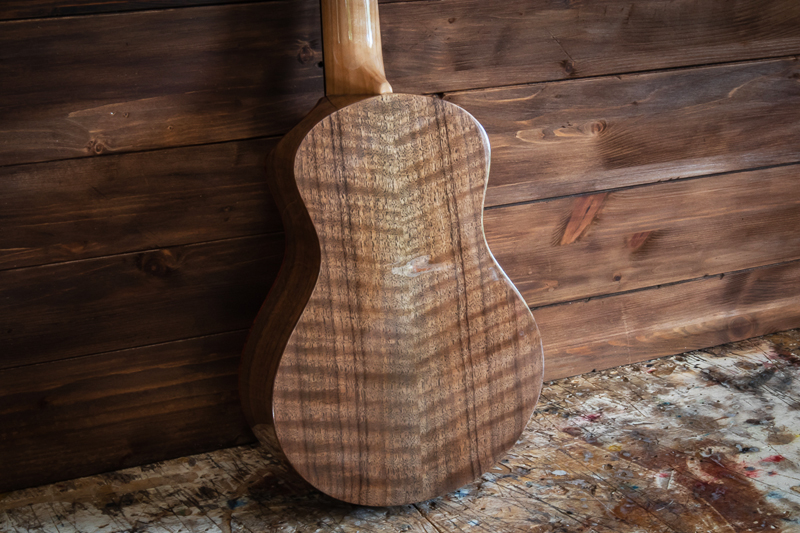WOODS
I like to use local and European woods and I try not use exotic ones. Sometimes for some parts of the instrument I need features that you can find only in an exotic wood, in this case I research a sustainable source for it.
The tonewoods used for the soundboard are the most important ones in the making of an istrument. Given my building technique and my hardwoods choice, I think that the hardwoods used for back and sides are less important in defining the final sound.
SOFTWOODS
Softwoods have always been the first choice as regards the construction of the soundboards of the instruments, at least as far as the European luthiery tradition is concerned. The ukulele is a strange beast and therefore it is very common to see one with soundboard of the same wood as the back and sides: this configuration gives the instrument a more characteristic sound, with more attack and less sustain, while the use of softwood makes the sound richer and more powerful.
I offer 2 kinds of softwoods for my ukuleles’ soundboards: Val di Fiemme Red Spruce and Red Cedar.
Val di Fiemme Red Spruce
Red spruce is the first choice for the soundboard in the classical luthierie, it is light stiff and, depending on the tree, it can have some nice figures in the grain. The red spruce I use comes from the Paneveggio forest in Val di Fiemme, the same wood Antonio Stradivari preferred for his instruments. A Red Spruce soundboard will boost every aspect of the sound of a ukulele by making it more powerful and richer. It is also quite a delicate wood that needs to be treated with care, given its very poor scratch resistance.
Red Cedar
Red cedar is often used for the soundboards of classical guitars. Even if it’s not European, I like to use it especially for its beautiful color and for the warmth of its sound. Just like the spruce, it will boost the sound of any ukulele, but it is even more delicate given its softness.
HARDWOODS
I believe that the sound of an istrument is determined also by the woods that compose it, but in my opinion the major contribution is made by the design and the maker. That’s why I don’t tend to say things like “maple sounds bright and walnut sounds mellow”. Despite this, I have made (see below) a list of some acoustic nuances that, even if in many cases are small, exist. As mentioned before, bear in mind that the sound of the instrument can be radically changed by other more influential factors. bonus new member
Cypress
While not being a common tonewood for ukuleles, cypress has a great history in early or niche instruments like the harpsichord and flamenco guitars. It is a crisp and light wood that emphasizes the high parts of an instrument’s sound. The scent it releases when worked is wonderful so, please, order more cypress ukuleles 🙂
Pear
Pear is a very nice wood that often shows flame figures. Its color can change a lot from set to set, also because it’s often kiln treated before distribution, so it can come in many shades of pink brown, sometimes with lighter stripes. It contributes to a slightly mellower sound when it’s used for soundboards.
Planewood
Planewood is quite a common wood in Europe and it gives its best when cut radially, so to show the beauty of its medullary rays, that look like beautiful freckles. Even if it is technically a hardwood it not so hard, that’s why it contributes to a slightly mellower sound when it’s used for soundboards.
Oak
Oak is my favorite tree and I really like to use its wood to make instruments. It’s very hard and this makes it suitable for fretboards and bridges making. When used as soundboard in combination with back and sides of the same wood it gives quite a peculiar sound. It takes the characteristics of the typical ukulele sound to extremes: very low sustain and overtones yet a closed and percussive voice.
Chestnut
Just like the Oak, Chestnut is one of my favorite woods, but it’s much softer and lighter.
Its pale color makes it perfect to be “Antiqued” with some dye or pigment, giving it a vintage touch that fits very well with the rustic texture of its open grain. When used for soundboards it contributes to a slightly drier sound.
Walnut
I use Black Walnut (originally from America, but it was imported to Europe a long time ago so it is possible for me to find local ones as well) that has a very dark and rich color. Sometimes it has some figures too and it has an open grain texture that I love. When used for soundboards it contributes to a balanced sound.
